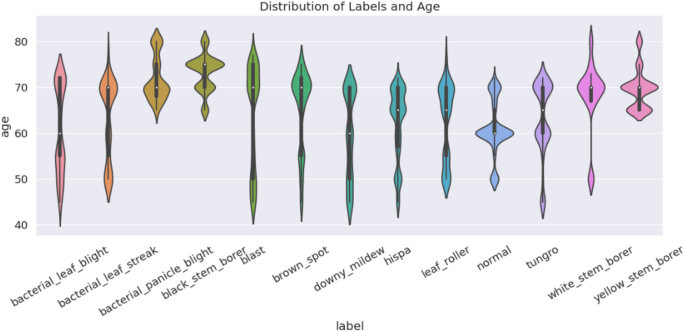Tech Comments (3) Luis Alvarez Adobe (NASDAQ:ADBE) and GitLab (NASDAQ:GTLB) shares slipped in early trading on Tuesday as investment firm Mizuho said the market believes it is seeing a “severe negative impact” from artificial intelligence. “ADBE sits at the intersection of creative software and generative Quick Insights Recommended For You

How Visa wove AI into every facet of the company by approaching it as both a science and an art
Digging into Visa’s AI efforts, it’s easy to see how the company earned the No. 2 spot on the Fortune AIQ 50 list, which benchmarks companies on their AI maturity.
According to Rajat Taneja, Visa’s president of technology, the global payments company has woven AI into every part of its business. Employees across Visa are tapping AI in their everyday workflows for tasks ranging from data analysis to software development. The company has built more than 100 internal AI-powered business applications tailored to specific use cases and has over 2,500 engineers working specifically on AI. Visa is also using AI to create new products and services for its customers, such as faster onboarding, simplified processes for managing disputes, and infrastructure for agentic AI technologies.
“[AI] is part of the fabric of the company,” Taneja said. “In everything we do, we’re using it internally, and we’re using it to create intelligent and smarter, more capable products for our customer base.”
But this didn’t happen overnight, or even in just the past few years. Visa was already hard at work developing AI technologies and strategies when ChatGPT entered the scene and kicked off the corporate rush toward AI adoption. It’s been a decade-long journey, and Taneja believes the approach the company was able to develop over that period—learning how to balance urgency with intention, and treating models as a science and governance as an art—played a big role in getting it this far.
The early adopter’s advantage
Visa’s first major investment in AI began about a decade ago when the company rewrote its data platform from scratch to take advantage of deep neural nets and early forms of predictive AI, according to Taneja.
“We looked at the future and decided to make some very big bets. One of the big bets was to rewrite our platform, but also to create layers for machine learning workbenches and training models faster,” he said.
The company kept up with AI developments and started embracing generative AI around 2018 or 2019, as soon as the power of transformers—the AI architecture discovered by Google researchers in 2017 that paved the way for large language models—became clear.
“So by the time the ChatGPT moment came upon us, we had already learned and put in a lot of effort, and we had some initial products that we were building. And then after November 2022, when ChatGPT was released, we completely leaned into generative AI. By February of 2023, every single employee in the company had access to the model to start having intelligence from the model brought into their day-to-day work,” Taneja said. He added that Visa was also one of the first companies to embrace Copilot by joining a pilot program with Microsoft, and the company has since purchased licenses for the vast majority of employees.
The art of governance
As Visa reengineered its tech stack for emerging AI, it put a great deal of effort into outlining its data-use principles as well as codifying those principles into observability systems to ensure the models do only what they’re supposed to do.
“The safety and management of these models is very, very important,” Taneja said. “It is a core belief of ours that, just as important as the sciences of models, is the art, which is the policy and the governance.”
He said the company spent $3.5 billion building its AI platform, which allows for close management of the AI models used inside the company and contains guardrails to prevent misuse and from drifting in production. Over the same period of five years, Visa spent around $12 billion on technology overall, underlining the hefty costs and dedication to governance efforts.
“I look at this every morning. This is my AI observatory,” Taneja said, sharing his screen and touring through an interactive dashboard. “So I can go in at any point in time and look at all the model catalogs, click on any model we have, understand every detail about that model … look at its compliance, its risk profile, and whether it meets every single privacy law there is, not just in the letter of the law, but the spirit of the law. [I can see] its security profile, and then I can manage the drift of that model. So as the model is working in real time, we can look at the parameters it’s under and set up an alert. And my team and I can get immediate alerts if a model is drifting from its guardrails.”
These efforts will only become more important as Visa, like many other companies, works to build and integrate agentic AI capabilities into its products and services. In Visa’s case, this would be agentic layers that will allow “agentic e-commerce,” or rather, the ability for AI tools like chatbots to interact with different services to make purchases on the customer’s behalf. The company recently launched the Visa Intelligent Commerce platform, its first version of foundational layers designed to enable agent e-commerce. It also released an MCP server, an emerging open-source framework that allows different agentic systems to interact.
“That foundation is all about allowing agents to get AI-enabled credentials,” said Taneja. “Credentials that have guardrails, that have controls, so that your data is personalized in a way that you protect your own personal information, but it can be tokenized as it is being used by an AI agent.”
Read more lessons from the Fortune AIQ 50, the latest Fortune AIQ special report. This collection of stories details how companies on the inaugural Fortune AIQ 50 list have made significant progress integrating artificial intelligence technology into their operations, leading to real impact.



